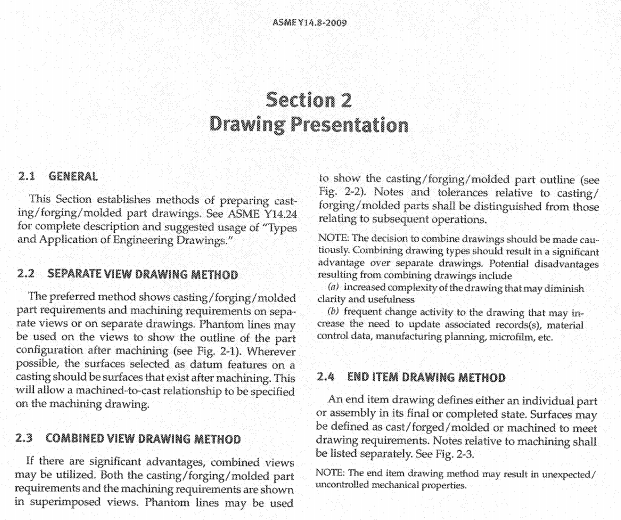(o) - Dimensions and Tolerances apply only at the drawing level where they are specified. A dimension specified for a given feature on one level of drawing is not mandatory for that feature at any other level.
Example: I have a machined casting that has many as-cast surfaces remaining on it. These as-cast surfaces are important for proper part function. Based upon fundamental rule (o) I need to put these casting dimensions on the machined part drawing or they can be modified during machining and the machined part is acceptable even though the important as-cast surfaces have been detrimentally changed. That is how I read fundamental rule (o).
How do people handle this situation? Do you actually put all remaining as-cast surface dimensions on the machined part print (in duplication of what is already on the casting drawing), making the machined part drawing extremely complicated to read? Or, do you put a note stating that as-cast surfaces are not to be modified from the casting print during machining?
Thank you.
Example: I have a machined casting that has many as-cast surfaces remaining on it. These as-cast surfaces are important for proper part function. Based upon fundamental rule (o) I need to put these casting dimensions on the machined part drawing or they can be modified during machining and the machined part is acceptable even though the important as-cast surfaces have been detrimentally changed. That is how I read fundamental rule (o).
How do people handle this situation? Do you actually put all remaining as-cast surface dimensions on the machined part print (in duplication of what is already on the casting drawing), making the machined part drawing extremely complicated to read? Or, do you put a note stating that as-cast surfaces are not to be modified from the casting print during machining?
Thank you.


